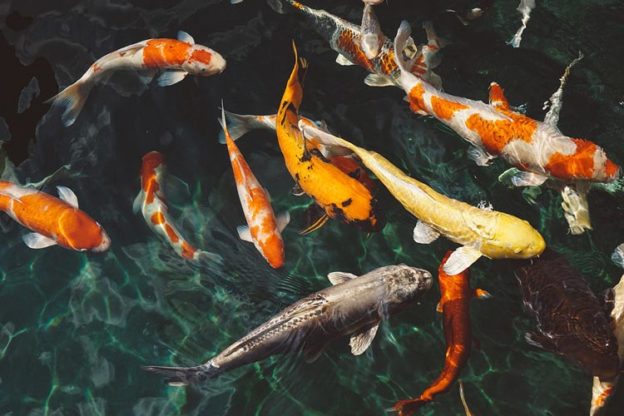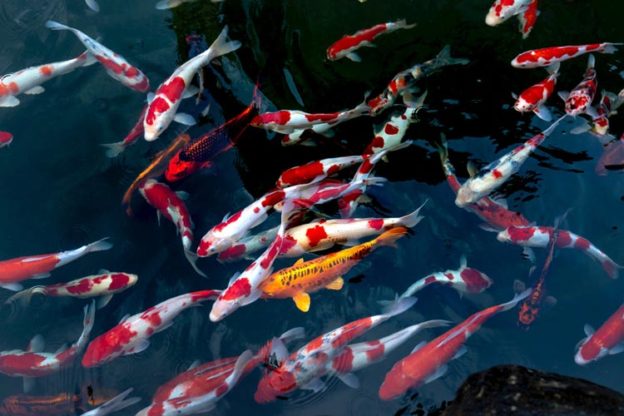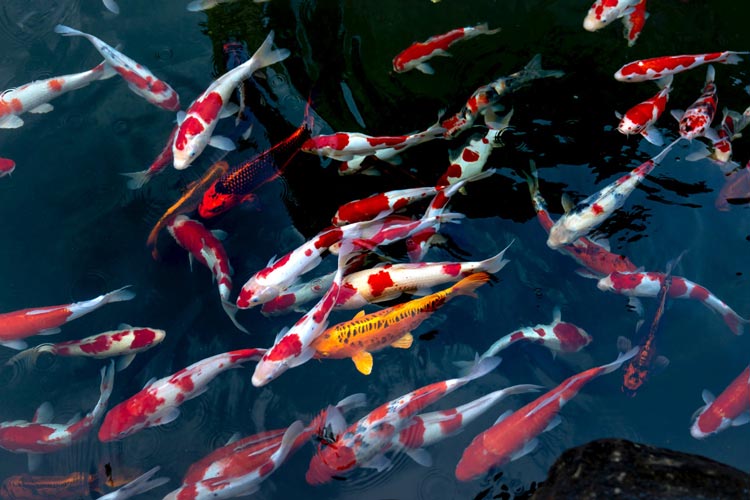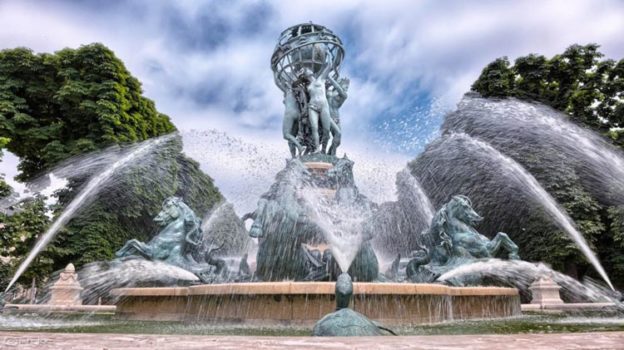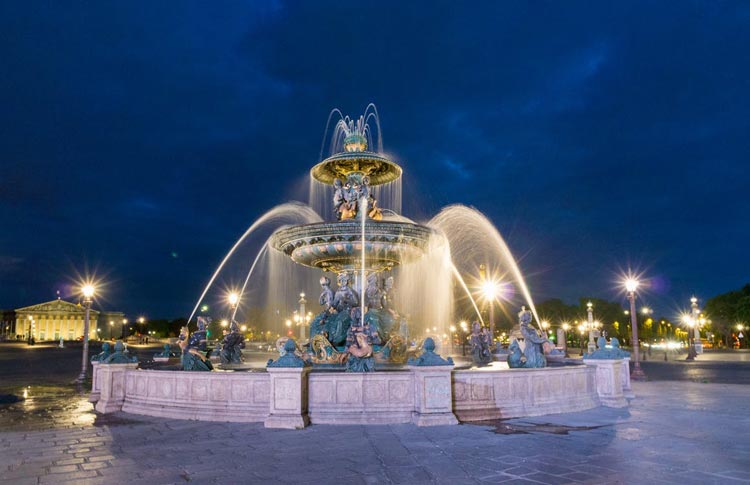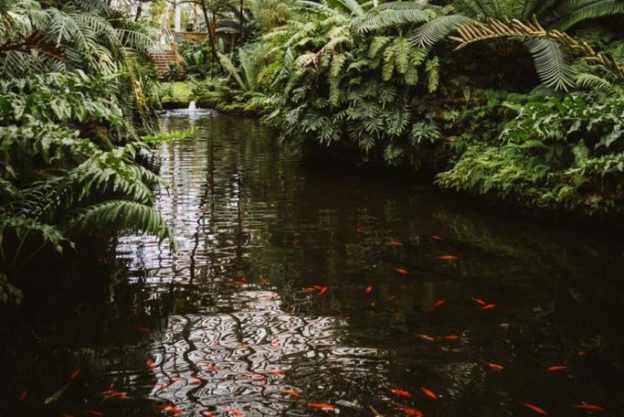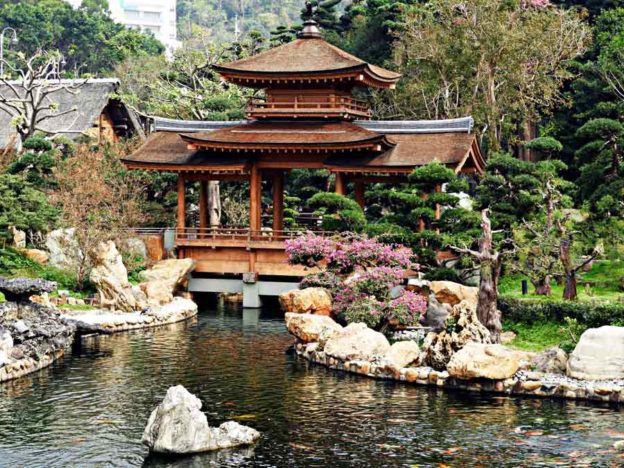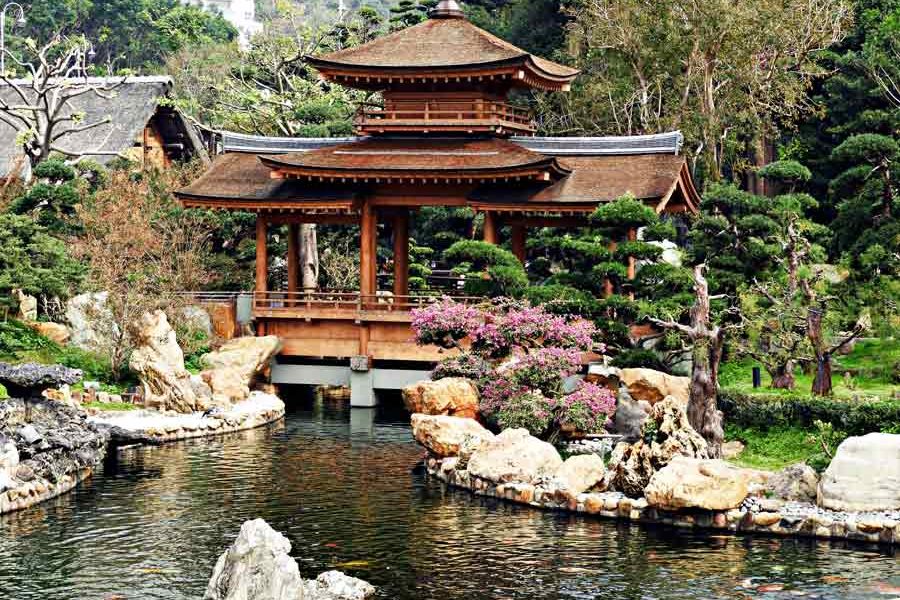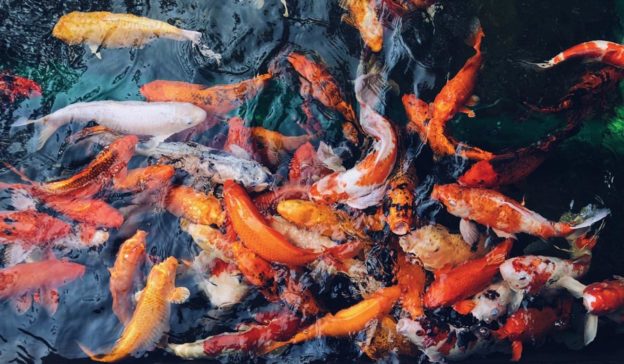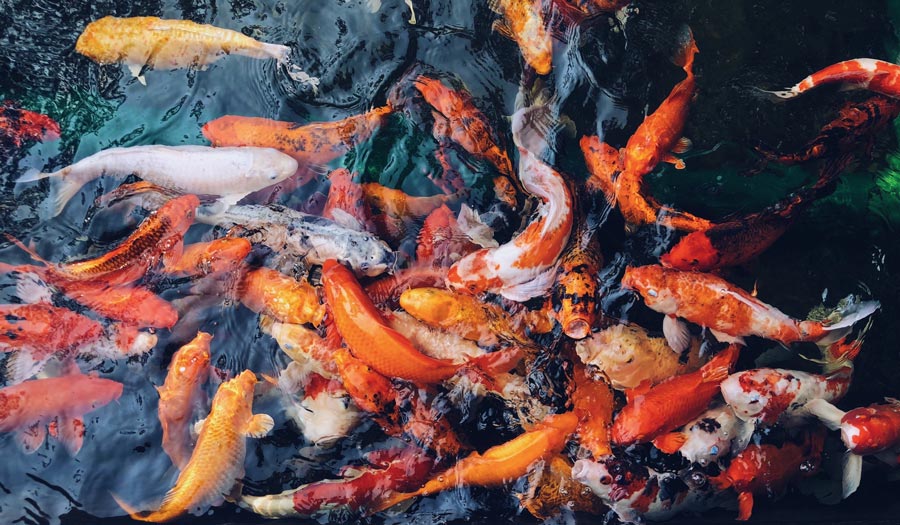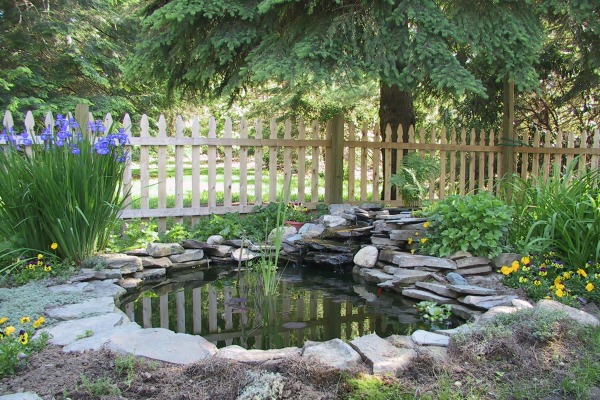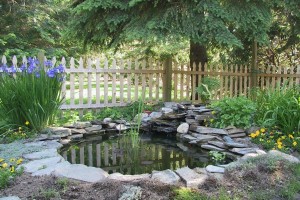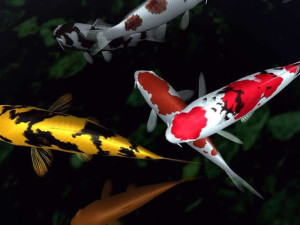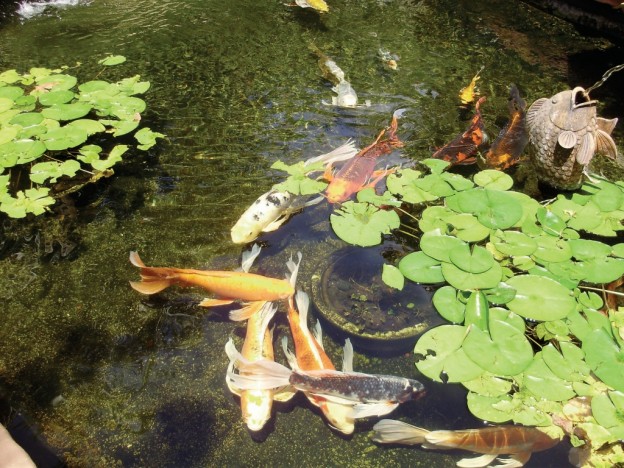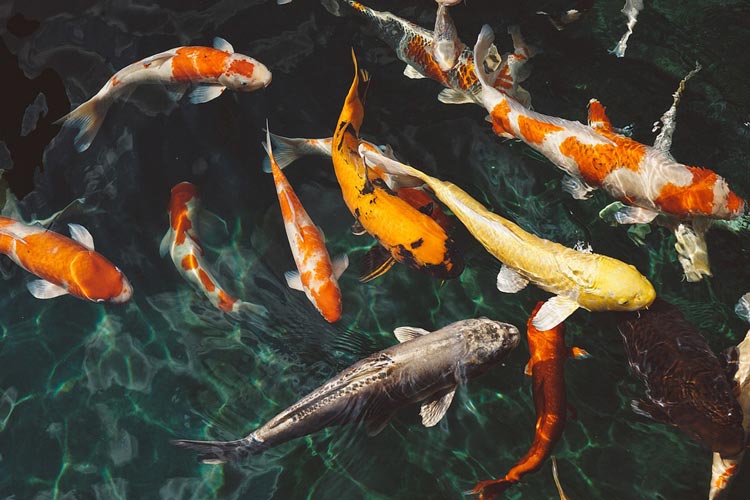
Before you get started on the construction of a koi pond in your garden, you should become familiar with koi pond maintenance and all the work this involves. Koi ponds are beautiful and can add an element of peace and serenity to any garden. However, they also require a lot of upkeep and care. You should make sure you are prepared for the costs and commitment of having a koi pond on your property.
We have compiled here a comprehensive guide for taking care of your koi fish and pond, as well as the types of koi pond services you might need to seek from a professional team.
Keep reading to learn how to take care of these amazing fish and keep their ecosystem thriving.
Types of Koi Fish
Koi fish are beautiful and striking animals that live in schools of between five and fifteen fish. They are active fish that will take advantage of every inch of the pond, from the bottom to the surface. Most koi have barbels on either side of their heads with a rounded mouth that allows them to swallow their prey.
There are a few main types of koi that you will probably come across when looking to fill your fountain, these are:
- Japanese Koi Fish: These are perhaps the most common type of koi found in garden ponds. They are white with red and orange markings.
- Butterfly Koi Fish: Butterfly koi are very valuable and beautiful. They can be many different colors and have strikingly long fins.
- Dragon Koi Fish: Sometimes ‘dragon koi’ is another name for butterfly koi. However, there is also a variety called Kumonryu, whose black and white markings change with the seasons.
- Gold Koi Fish: Like butterfly koi, gold koi are highly sought after for the fact that they are entirely covered in gold scales.
Koi Fish Food
In general, koi fish eat a similar diet to many other fish, eating plant material, algae, and insects. If you properly maintain your koi pond, the fish should easily be able to satisfy their large appetites.
You should aim to provide your koi with both commercial food and an ecosystem that will provide them with natural food options. This will require a good amount of algae and vegetation in the pond throughout the year.
Read More: How to Build an Algae-Free Fish Pond
Since they also eat zooplankton, you should purchase water fleas or brine shrimp, which will fill this gap in their diet.
Food specially made for koi fish will provide the fish with lots of protein and will help maintain their overall health.
If you are worried about forgetting to feed your fish throughout the day, consider purchasing an automatic feeder so the koi never go hungry.
Type of Pond
While koi fish will not require too much human intervention to survive, their habitat does need to large enough to encourage plant growth and to give them enough room to thrive.
It’s very important that the pond’s temperature remains stable. Koi survive during the winter by swimming close to the bottom of the pond. However, this is a slow temperature change across many months. They will not fare well with dramatic fluctuations in temperature. This means the pond should be at least three feet deep.
If you are worried that predators like birds or raccoons might be a threat to your koi, you should drape a net across the pond’s surface or construct a pond with steep edges and plants along the side.
Read More: Important Things To Consider Before Installing a Koi Pond
Water Quality
Specialized varieties of koi fish can lead to in-breeding of the fish, causing the fish to be sensitive to their environments. Many koi require the water they swim in to be closely monitored and properly maintained.
While you should check with the seller of your koi, the following is what is recommended for the average garden koi pond.
- Stable pH level between 6.9 and 8.2: This will ensure your pond does not become too acidic or too alkaline for the fish.
- Water hardness: Hard water contains more minerals, like magnesium and calcium, than soft water. While water hardness is not as important as other water quality measures, it’s still a good idea to keep the general hardness between 60 and 160 ppm.
- Nitrate-free and ammonia-free: Ammonia and nitrates can have serious effects on the health of your koi fish. When ammonia is in the pond water, it burns the gills of the koi and high levels of nitrates can harm the fish’s organs.
Introducing salt into your koi’s environment can also have great effects. This will diminish the fish of disease and help the osmotic pressure between the koi and their ecosystem.
Koi Pond Maintenance
To keep your koi pond running smoothly all year long, you will a lot of equipment and a strong commitment to monitoring the pond.
One of the key features of your pond will be its filtration system. You should speak with a professional as to which water filter best suits your pond. Before choosing a filter, you will need to know the volume of the pond as well as its depth and how many fish you plan to keep there.
You should also consider a sturdy and effective water pump that will keep the water moving through the filter and a pond skimmer to ensure leaves, twigs, and scum don’t overtake the surface of the pond.
A professional company with experience building and maintaining koi ponds can help you ease into the duties of caring for your pond. A new owner should hire a professional the first time a blockage occurs in the pump or water system to ensure that no DIY endeavors go wrong.
